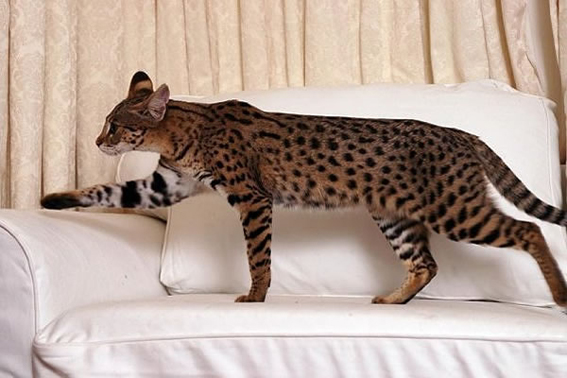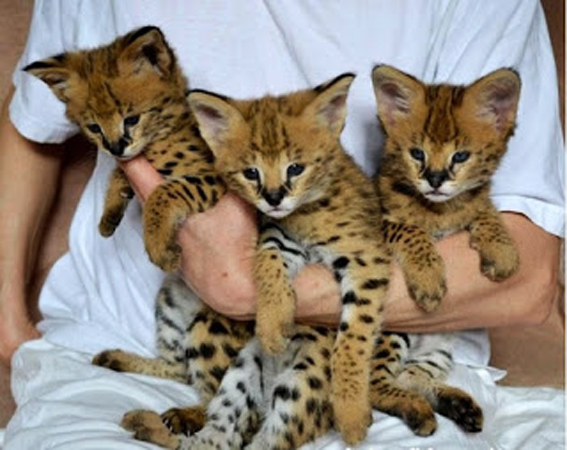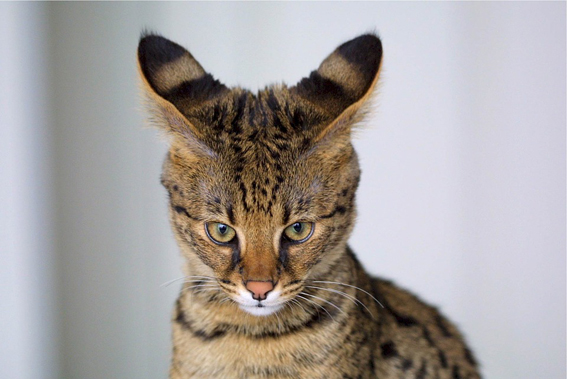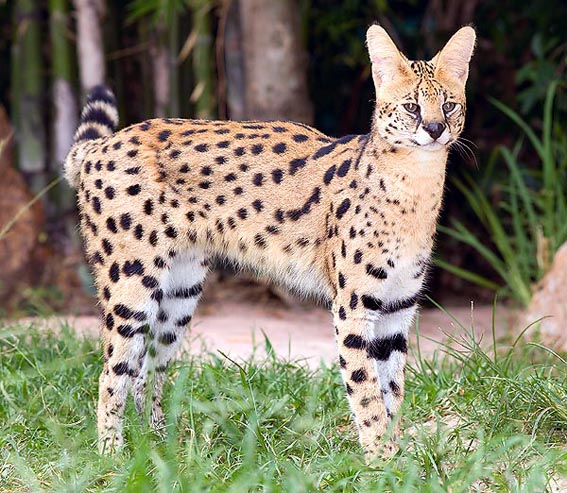SAVANNAH CAT… THE WILD DOMESTIC CAT
- Details
- Category: Special and wild cats
- Hits: 440

Given my opposition to races, the creation and selection of living beings, I still want to show you this creature of rare beauty: The Savannah. It is a domestic cat with a wild appearance, an authentic exotic beauty. It is a breed created by crossing a wild cat native to Africa, the Servano, with a domestic cat.
The first cross was obtained on April 7, 1986, by Judee Frank who, by crossing a male serval with a Siamese cat, obtained a female, the first female, of a Savannah cat.
Several years passed before the official recognition of the breed, which took place only in 2001.

characteristics of the Savannah cat:
1) Small head compared to the body, triangular in shape
2) Large ears, wider at the base and round at the tip and on the back it has the typical ocelli, which are distinguished by the light band in the center with black, gray or brown strokes on the sides.
3) The long legs.
4) a slim and athletic body
5) The leopard-like coat (spotted).
6) The size does not far exceed that of a domestic cat.
7) The tail is of medium length and is black and blunt at the tip.
8) The eyes have a dark line that delimits the upper arch, and which then runs along the side of the head, up to the mustache.
9) The Savannah cat has a very particular vocalization like the Serval, it can also hiss like a snake.
What makes this cat exceptional besides its beauty is its character. They are very intelligent and curious cats. They can learn many commands and are very attached to their human friend. They have a very similar character to that of dogs. They are affectionate and cuddly and love to play with children

They are very sociable with everyone even with strangers. He can learn to open doors by himself and to take objects from the wardrobe by himself. He is a born jumper, reaches 2.5m in height, and loves to observe and observe you from high above the furniture or on the plants.
Generations are classified with the letter F followed by a number to identify the amount of serval genome in the savannah specimen:
F1 = Generation 1, with one parent serve him (50% serve him)
F2 = Generation II, the serval is the grandfather (25% serve him)
F3 = Third generation, serve him great-grandfather (12.5% serve him)
F4 = Generation IV (6.25% serve him)
F5 = Generation V (3.12% serve him)
The male savannah is sterile until the fifth generation and this is one of the reasons that this breed is included in the ranking of the ten most expensive cats in the world. A Savannah specimen can cost up to 20,000.00 Euros
In some countries, such as Australia, it is a banned breed because it could have a negative effect on the local fauna. The Savannah being a hybrid, still retains some characteristics and needs of its ancestors and in some cases they can become aggressive and this unfortunately pushes uncivilized people to abandon them.
I would never buy a purebred cat, no matter how special it may be, but if I found it abandoned I would certainly adopt it and take it to safety, as I would do with all the other troubled cats I encounter on my path.
I insert the photo of the African wild cat, the Servalus, reiterating the fact that in my opinion it would have been much more fascinating to observe it in nature and in its habitat than to succeed with rigid selections to make it a domestic and living room cat distorting it of its wild nature. We shouldn't be presumed to have a wild animal in the living room.













